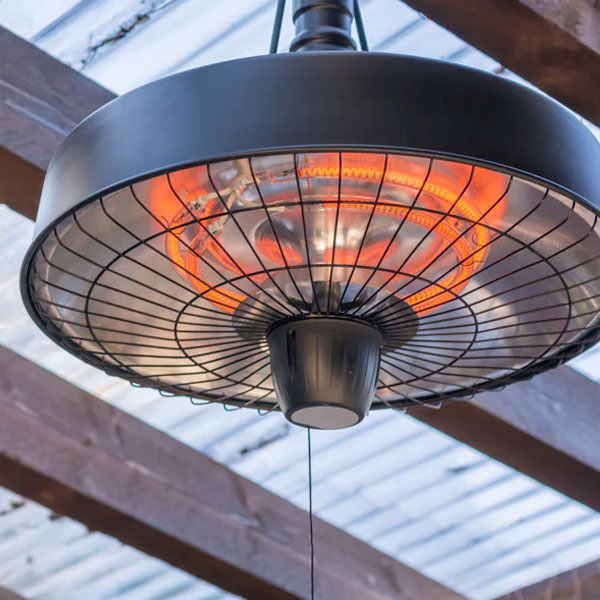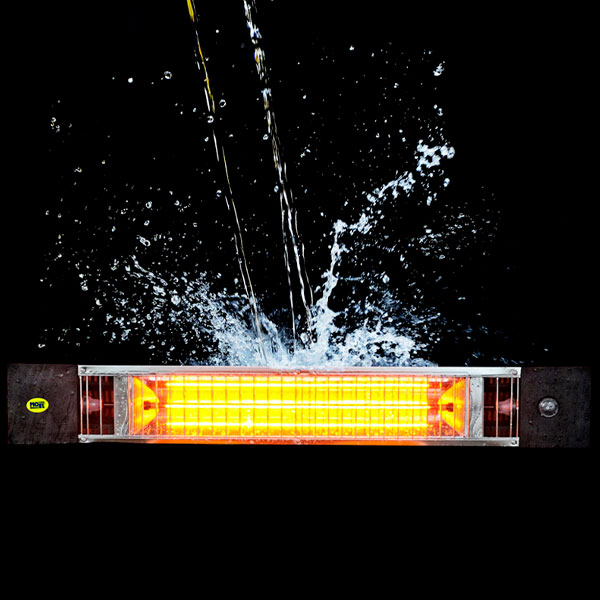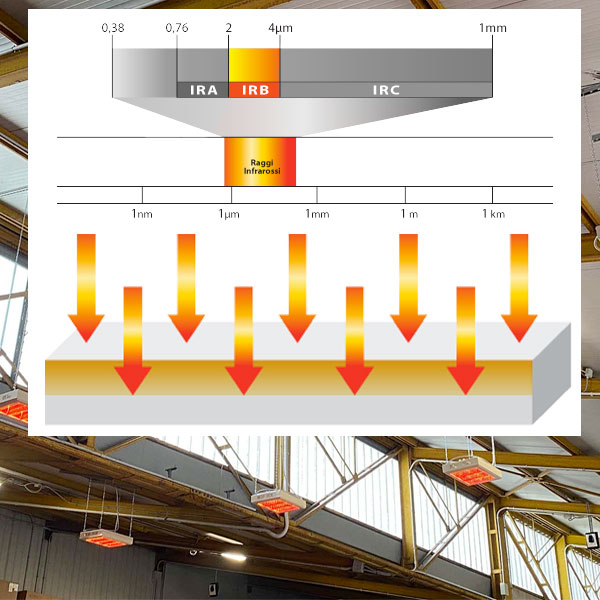
MO-EL Iris 867 N/NRC
Infrared Lamp
Indoor/Outdoor Heating
IP55 - Indoor/Outdoor
Yellow Light
Infrared lamps represent an advanced and versatile solution for targeted and efficient heating of both outdoor and indoor spaces. Heating lamps are indeed an innovative energy solution, a smart choice not only from an environmental perspective but also economically. Their ability to directly heat objects and people, without heat dispersion in the surrounding air, makes them ideal for those seeking targeted thermal comfort.
When deciding to purchase an infrared lamp, it's essential to consider several key factors. These include the lamp type, power, recommended applications, heat distribution method, versatility of use in both indoor and outdoor environments, and the type of lighting provided. Below we'll explore how to choose the heating system best suited to your needs from the wide range of lamps available on our site.
Infrared lamps operate using electromagnetic wave technology in the infrared range. These waves are invisible to the human eye but generate heat when they come into contact with objects and surfaces. They are non-dangerous waves used in various everyday contexts.
The lamp contains an electrical resistance or special incandescent bulb that emits infrared rays when electrically powered. Unlike traditional heating systems that warm the surrounding air, infrared lamps provide direct, targeted heating to objects and people within their coverage area.

The first characteristic to consider when purchasing a heating lamp is its protection rating, which indicates where it can be installed. The IP rating distinguishes heating lamps between indoor, outdoor, and protected outdoor use. The IP class represents the lamp's impermeability against the entry of foreign bodies, dust and moisture.
The IP protection class consists of two digits - the first indicates protection against foreign object ingress while the second digit indicates moisture protection. These numbers range from 0 to 6 for the first digit and up to 9 for the second; the higher the number, the greater the protection. An outdoor lamp might have IP44 to withstand light rain or IP65 to withstand storms and more intense water jets.
| IP | First Digit - Foreign Object Protection | Second Digit - Water Protection |
| 0 | No protection | No protection |
| 1 | Solid objects ≥ 50 mm | Vertical dripping |
| 2 | Solid objects ≥ 12.5 mm | Dripping at 15° tilt |
| 3 | Solid objects ≥ 2.5 mm | Spraying water |
| 4 | Solid objects ≥ 1 mm | Splashing water |
| 5 | Dust protected | Water jets |
| 6 | Dust tight | Powerful water jets |
| 7 | - | Temporary immersion |
| 8 | - | Continuous immersion |
| 9 | - | High-pressure/steam cleaning |

These infrared waves have greater heat diffusion capacity, ensuring uniform, intense and comfortable heat distribution. This phenomenon is attributable to the wave's limited penetration in air, which contributes to a more natural heat sensation and maintains heat even after turning off. Medium fast waves are most used in industrial applications for their better power/heat distribution ratio, though they're also the most expensive and therefore generally less known.
Quartz medium wave lamps reach operating temperature in about 40 seconds. Additionally, medium fast infrared waves emit very little visible light and the bulb temperature can reach 500°C.

Short infrared waves represent the most common and efficient variety, capable of initiating the heating process in just one second after activation. However, it's important to note this wave type generates more concentrated heat, which manifests immediately but dissipates equally quickly when the lamp is turned off. This is because they're most effective at penetrating air (about 97%), immediately irradiating surfaces, though they can be reflected by smooth or light-colored surfaces despite being well absorbed by the body. These waves are closest to the visible spectrum and have a ruby red color. The bulb temperature is very high, from 700 to 1200°C.

These infrared waves are typically found in heating elements (wall or floor heating) or in ceiling-mounted indoor lamps, because their radiant effect is weaker and is most noticeable when in immediate proximity. These waves are completely invisible and their thermal characteristic doesn't exceed 95 degrees.

Infrared lamps are used in various contexts including domestic environments, outdoor spaces like patios and gardens, industrial settings, and even in medical applications for heat therapy. Infrared lamps come in different types:

Infrared lamps present a versatile and efficient solution to meet different heating needs in domestic, commercial and industrial sectors, ensuring comfort and wellbeing in specific rooms, commercial spaces or industrial environments. They can be used in the following areas:







